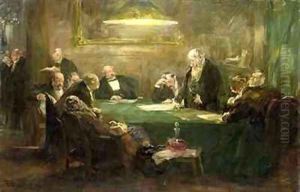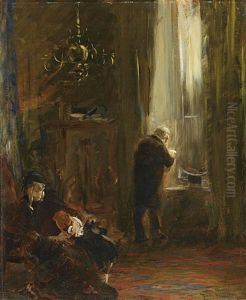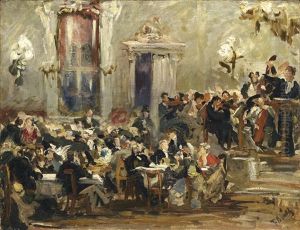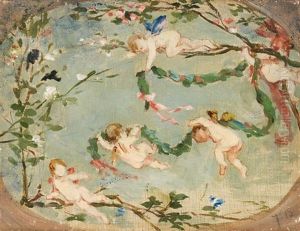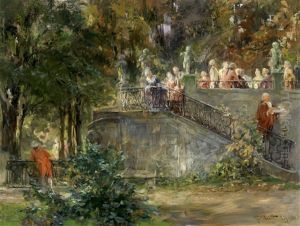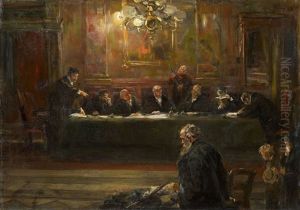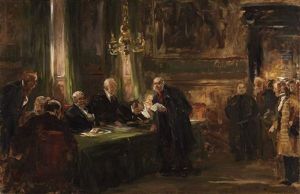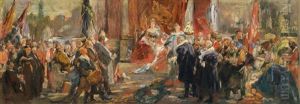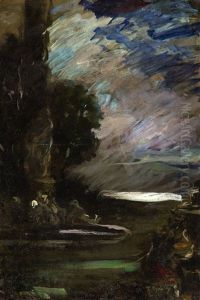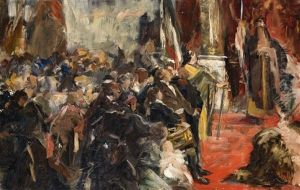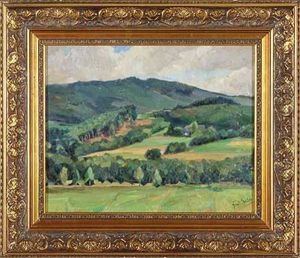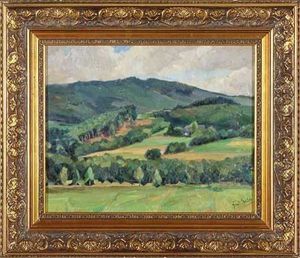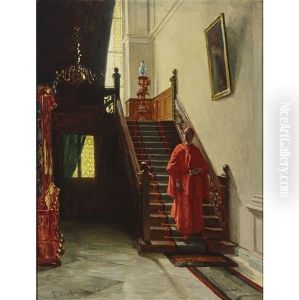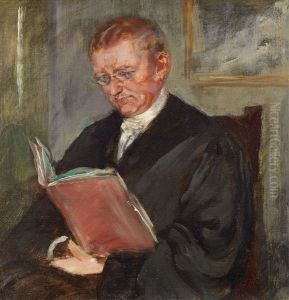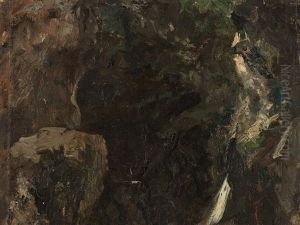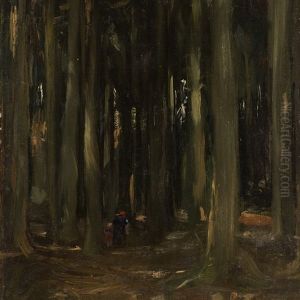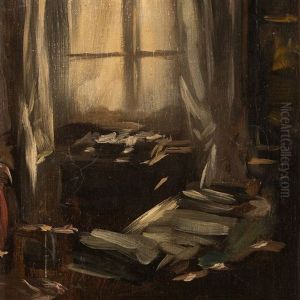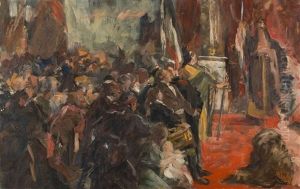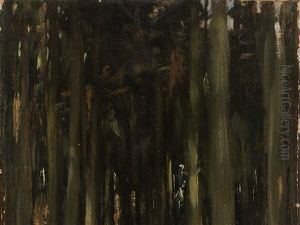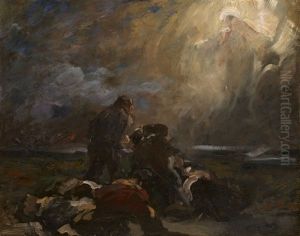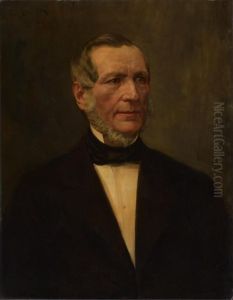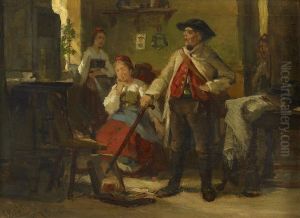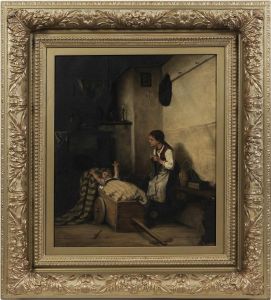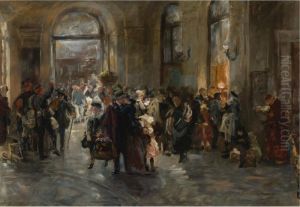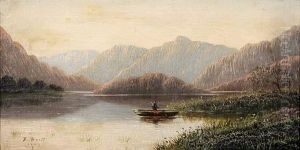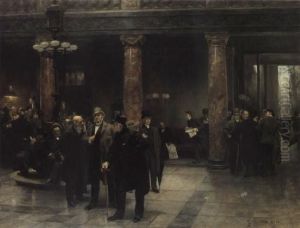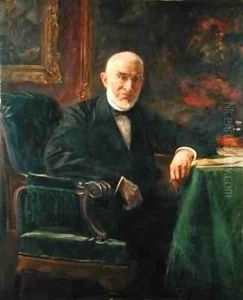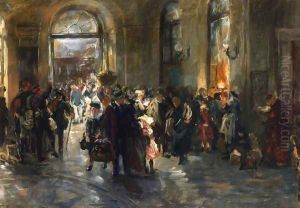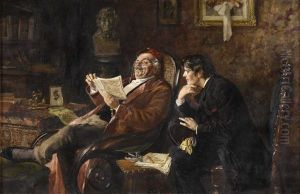Ferdinand Brutt Paintings
Ferdinand Brutt, born in 1849 in Cologne, Germany, was a distinguished 19th-century German painter known for his genre paintings, portraits, and interior scenes which vividly captured the essence of his era. Brutt displayed an early talent for the arts, prompting him to pursue his passion rigorously. He embarked on his artistic education at the Düsseldorf Academy of Arts, where he was influenced by the Düsseldorf school of painting, a movement renowned for its meticulous detail, emphasis on color, and narrative genre works.
During his time at the academy, Brutt was mentored by several prominent artists who played a significant role in shaping his style and technique. His works often depicted everyday life with a focus on the social interactions and domestic activities of the bourgeoisie and the aristocracy, imbuing them with a sense of realism and emotional depth. Brutt's ability to capture the nuances of light and shadow, as well as his adept use of color, set his work apart from his contemporaries.
After completing his education, Ferdinand Brutt traveled extensively throughout Europe, drawing inspiration from various cultures and artistic styles. These travels enriched his palette and broadened his thematic range, incorporating elements from different European art movements into his own work. Despite the influence of these movements, Brutt remained deeply committed to the realist tradition, focusing on the precise depiction of his subjects.
Throughout his career, Brutt exhibited his work in numerous exhibitions across Germany and beyond, gaining recognition and acclaim for his artistic achievements. His paintings were celebrated for their elegance, detailed composition, and the skillful portrayal of his subjects' inner life and emotions. Ferdinand Brutt's contributions to German art were significant, and his works continue to be admired for their beauty and historical value.
Ferdinand Brutt passed away in 1936, leaving behind a legacy as one of the notable figures in German art. His paintings are preserved in various museums and private collections, where they continue to enchant and inspire art lovers and historians alike.
